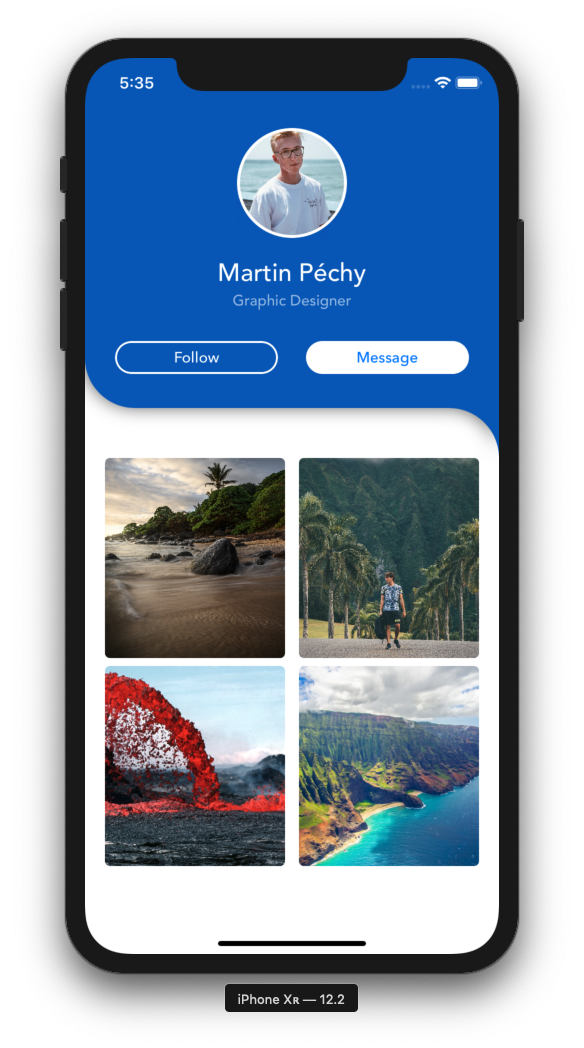
Creating your own custom header in Swift can be easy. For the example above we simply used a custom UIBezierPath which we apply to a CAShapeLayer and then add to our custom UIView.
//
// CurvedHeaderView.swift
// CurvedHeaderExamples
//
// Created by Jean-Marc Boullianne on 8/30/19.
// Copyright © 2019 Jean-Marc Boullianne. All rights reserved.
//
import UIKit
@IBDesignable class CurvedHeaderView: UIView {
@IBInspectable var curveHeight:CGFloat = 50.0
var curvedLayer = CAShapeLayer()
override func draw(_ rect: CGRect) {
let path = UIBezierPath()
path.move(to: CGPoint(x: 0, y: 0))
path.addLine(to: CGPoint(x: rect.width, y: 0))
path.addLine(to: CGPoint(x: rect.width, y: rect.height))
path.addArc(withCenter: CGPoint(x: CGFloat(rect.width) - curveHeight, y: rect.height), radius: curveHeight, startAngle: 0, endAngle: 1.5 * CGFloat.pi, clockwise: false)
path.addLine(to: CGPoint(x: curveHeight, y: rect.height - curveHeight))
path.addArc(withCenter: CGPoint(x: curveHeight, y: rect.height - (curveHeight * 2.0)), radius: curveHeight, startAngle: 0, endAngle: CGFloat.pi, clockwise: true)
path.close()
curvedLayer.path = path.cgPath
curvedLayer.fillColor = UIColor(red: 8/255, green: 95/255, blue: 189/255, alpha: 1.0).cgColor
curvedLayer.frame = rect
self.layer.insertSublayer(curvedLayer, at: 0)
self.layer.shadowColor = UIColor.black.cgColor
self.layer.shadowRadius = 10.0
self.layer.shadowOpacity = 0.7
}
}